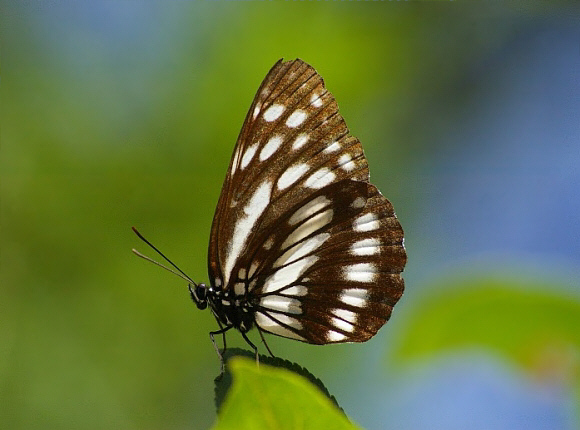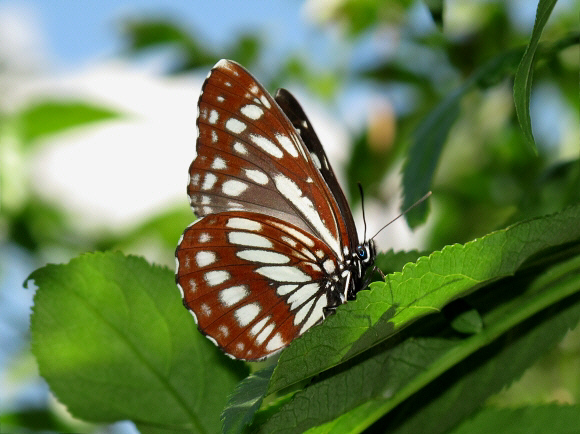
Introduction
The genus Neptis, together with Pantoporia and Athyma can be regarded as a ‘sister’ genus to the holarctic Limenitis and the neotropical Adelpha.
There are about 170 Neptis species, of which about 65 occur in Africa, 40+ in the Palaearctic, 50 in the Oriental region and 6 in the Australian / Papuan region. The genus is unsatisfactorily split into several loosely defined groups. It is likely that phylogenetic analysis will eventually lead to each of these being classified as a separate genus or sub-genus.
The upperside ground colour of a typical Neptis is dark brown or blackish, with a long white streak in the forewing discal cell, and a distinctive arrangement of white bands and spots. In some species the white markings are replaced by yellowish or orange. The pattern is repeated on the underside, on a plain orange-brown ground colour.
Neptis dejeani is found in China and Japan.
Habitats
This species inhabits humid deciduous forest at altitudes up to about 1000m.
Lifecycle
The larvae reportedly feed on Fabaceae and Malvaceae.
Adult behaviour
Males imbibe mineralised moisture from damp ground, and spend long periods perching on the foliage of trees and bushes where they await passing females. Both sexes imbibe aphid secretions ‘honey-dew’ which coat the upper surface of leaves. The flight is slow, precise and graceful but if alarmed the butterflies can move rapidly.

